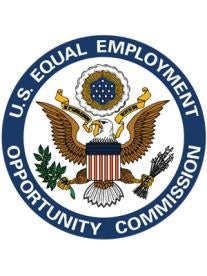Signaling an agency culture reset, the Equal Employment Opportunity Commission (EEOC) is proposing a regulation that promises to make the EEOC conciliation process more efficient and transparent. In theory, the changes will help companies sharpen settlement valuations. However, the regulation also may open new issues.
Current Conciliation Practices
On October 9, 2020, the EEOC’s published a notice of proposed rulemaking to issue new regulation with the purpose of improving the efficiency and transparency of EEOC Title VII of the Civil Rights Act, Age Discrimination in Employment Act (ADEA), Americans with Disabilities Act (ADA), and Genetic Information Nondiscrimination Act (GINA) lawsuits. The EEOC has set a 30-day comment period.
The EEOC is required by relevant statutes to attempt to conciliate or settle a matter with a company after the agency has determined a reasonable cause exists to believe that a violation has occurred. Some who have been through the EEOC conciliation process complain that the EEOC does not share details of evidence supporting the reasonable cause determination. Another complaint is that the EEOC does not adhere to key settlement conference protocols. For example, charging parties often are not invited to conciliation conferences and, in normal circumstances, there is no neutral party at an EEOC conciliation. In addition, in conciliations involving multiple aggrieved individuals, the EEOC often refuses to identify known individuals who will be receiving money from the company until after the company has executed a final conciliation agreement.
In 2015, in Mach Mining, LLC v. EEOC, 135 S.Ct. 1645, the U.S. Supreme Court approved the EEOC’s practice of providing only basic facts in conciliation and declined to require the EEOC to operate in good faith during conciliation. The EEOC had cheered the ruling.
Despite these shortfalls in the conciliation process, the EEOC has successfully conciliated cause determinations, allowing companies to avoid litigation costs and publicity associated with an EEOC lawsuit.
Proposed Regulation
The EEOC’s proposed regulation requires the EEOC to provide any interested respondent with:
-
A written summary of known facts and non-privileged information that the EEOC relied on in issuing its reasonable cause finding;
-
The names of known aggrieved individual or known groups of aggrieved individuals, unless the individuals have requested anonymity;
-
If a claims process will be used to identify aggrieved individuals, the EEOC is to provide the respondent company with the criteria to be used to identify the class;
-
A summary of the EEOC’s legal basis for finding reasonable cause;
-
Any information the EEOC obtained during the investigation that caused the EEOC to doubt there was reasonable cause;
-
Calculations underlying the EEOC’s claims for monetary relief;
-
Whether the matter is systemic; and
-
14 days to respond to the EEOC’s initial conciliation proposal.
The proposed regulations also require the EEOC to give all information provided to the respondent company, the charging party, and other aggrieved individuals on request.
Potential Impact of Regulation
This proposed conciliation regulation is promising, but it does not go far enough to fulfilling the spirit of the regulation. For example, it does not require the EEOC to identify potential class members if the individuals request confidentiality and allow the EEOC to identify groups of aggrieved individuals rather than individuals. Further, it does not require the EEOC to disclose the members of the EEOC’s class known at the time of the conciliation.
The EEOC has aspirations of smooth, issue-free conciliations. However, if the final version of the EEOC’s conciliation regulation is identical to the proposed regulation, EEOC conciliations, particularly systemic and class conciliations, likely will continue to be challenging for respondent companies. The EEOC can avoid identifying individuals for whom it is requesting hundreds of thousands of dollars in relief in other ways. In addition, the proposed regulation does not commit the EEOC to a good faith standard. In fact, the proposed regulation does not require the EEOC to counter any proposal made by a respondent company.






 i
i


